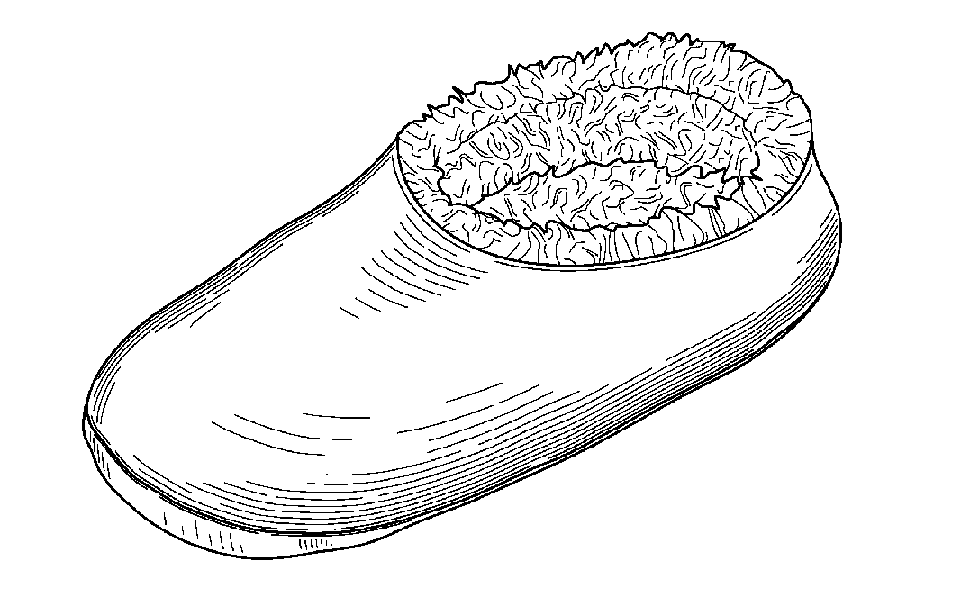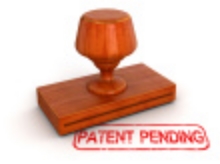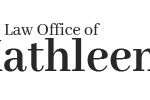
by Kathleen Lynch | Aug 6, 2015 | Entrepreneurship, Innovation, IP Management, Patent Prosecution
(I have to admit I picked this case in part on the name, Fuzzy Babba. )
Walmart sells a similar fuzzy slipper under the mark “Fuzzy Babba™.” Buyer’s Direct sued Walmart and others for infringing their design patent directed to a slipper that Buyer’s Direct sells under the mark “Snoozies”. In their defense, Walmart and others claimed that the patent was invalid because it was an obvious variation on slipper designs in existence at the time the patent application was filed.
A Federal District Court in New York City found in favor of the accused infringers, Walmart, Sears and High Point Design. The court found that the differences between the design patent and other slipper designs were obvious variations and that the patent was invalid.
What’s the take away here? Be very sure of the strength of your patent when you assert it against an alleged infringer. The first defense is often an attack on the patent itself. If the accused infringers prevail, your patent may be invalidated and any rights associated with it are lost.
Advising on intellectual property issues is critical to any organization. Having the right person to help you make that decision is important. The Law Office of Kathleen Lynch PLLC is designed to help businesses such as yours keep ahead of the game. The first telephone consultation is free. Email us at [email protected].

by Kathleen Lynch | Jul 7, 2015 | Entrepreneurship, Patent Prosecution
As we all head outdoors for summer activities and vacations, I thought I’d take a look at some recent summertime inventions that caught my eye. The first is a “Flying Insect Repelling Hat”, US Publication No. 2015/0143612. The hat includes a series of solar operated fans located along the brim and pointed toward the user. The solar panel is located on the top of the hat. The air movement powered by the fans keeps those pesky insects at bay.
Another is the “Turtle Friendly Beach Cleaning Device,” US Publication No. 2015/0144362. Who knew that sea turtles and their hatchlings struggle with sand that is rippled or raked? Now there is a device that cleans the beach sand but leaves the sand relatively flat which enables the turtles and hatchlings to make their way up and down the beach.
Last but certainly not least is the “Interlocking Swim Noodle,” US Publication No. 2015/0118927. These swim noodles have a cross-sectional shape that looks something like a jigsaw puzzle piece with recesses and protrusions. The recess of one noodle is sized and shaped to receive the protrusion of another noodle. With enough noodles you can build a giant noodle fortress and rule the pool!
If you have a summer time invention, identifying and protecting it is important to its commercial success. Having the right person to help you through that process can make all the difference. The Law Office of Kathleen Lynch PLLC is designed to help businesses such as yours keep ahead of the game. The first telephone consultation is free. Email us at [email protected].
Happy summer!

by Kathleen Lynch | Jan 29, 2015 | Entrepreneurship, Patent Prosecution, Start Up Considerations, Trademark Service Mark
Intellectual property is the life blood of many small businesses and entrepreneurial enterprises. Knowing how and what may need protection could mean the difference between success and failure. I set forth below three basic things every entrepreneur and business person should do to protect the intellectual property inherent in any organization.
- Identify your intellectual property
- Before you can protect your intellectual property assets, you need to understand what they are. Intellectual property is a bundle of legal rights. These consist essentially of patents, trademarks, copyrights and trade secrets. Patents are directed primarily to objects of manufacture (things), methods of making or doing something, designs (ornamental aspects of a thing), compositions of matter and plants. If you make devices or compositions of matter, you will likely want to determine whether your device, composition, or methodologies associated with your business may be subject to patent protection. If you make an object, you may also want to consider whether there are any ornamental aspects of your object that may be new and subject to design patent protection.
- If you use trademarks, service marks or logos in connection with the sale of your goods or services, you may want to register those marks or logos nationally or internationally. If your business involves training or educational services, any materials used may be subject to copyright protection. If your business has been successful by using particular strategies or processes that have given it a competitive edge over your competition, you may want to properly identify those strategies as trade secrets. Some methodologies used in manufacturing may be better suited to trade secret protection rather than patent protection.
- Determine whether your intellectual property can be protected
- Once you have identified what you believe to be your intellectual property, you need to determine whether it is protectable under current laws. If you believe your new widget is patentable, a patentability search and assessment is a logical next step. A patentability search and assessment will provide you with the information you need to determine whether there is any meaningful patent protection available to you. This applies to objects, as well as methods, compositions of matter, and designs. A proper patentability search will search all relevant patent records and provide you with the most pertinent documentation of the state of the relevant art. A patent professional can assist with interpreting the search results to determine the scope of patent protection likely available to your invention.
- Similarly, with a trademark or logo, an availability search and assessment is a prudent next step. This involves searching relevant records to provide you with current uses of the same or similar marks or logos. From this information, you can determine whether to proceed with a trademark or service mark registration. A trademark professional can help you make that determination.
- Protect What Intellectual Property You Can
- Once you have identified and determined what rights are available to you, you can proceed with protecting your intellectual property to maximize your competitive advantage. Patentable aspects of any objects, methods, compositions or designs should be protected. Marks or logos available for use and registration should be the subject of US or international trademark or service mark applications.
- Copyrighted materials should be marked with the “©” or “Copyright” followed by the year(s) in which the material was created and name of the owner. Trade secrets, properly identified, should be protected through a series of procedures identified by your organization to ensure confidentiality. This may include, by example, limiting access to certain information, marking documents as “confidential”, ensuring all employees understand their obligations to maintain secrecy of proprietary information, executing confidentiality agreements with third parties where proprietary information may be exchanged.
Protecting your innovative developments is critical to any organization. Having the right person to help you make that decision is important. The Law Office of Kathleen Lynch PLLC is designed to help businesses such as yours keep ahead of the game. The first telephone consultation is free. Email us at [email protected].

by Kathleen Lynch | Jan 14, 2015 | Entrepreneurship, Patent Prosecution, Start Up Considerations
Recently, one of my clients asked me about the pros and cons of marking “patent pending” on his invention. I advised him that I thought he should mark his invention and here’s why.
First, it puts others on notice that you intend to protect your invention with a patent. That means that if the patent covering your product issues, then others will need to assess whether they infringe your patent, if they use, make, sell, or offer for sale the product as described in the issued patent.
Second, while marking “patent pending” has no legal effect, when and if the patent issues, display of the patent number does impact your legal rights. Failure to mark your invention, once a patent issues, will prevent you from collecting damages until you either begin marking or you give actual notice of patent infringement.
Third, if you are putting others on notice that your product may be patentable, that may be advantageous when talking to investors or potential licensees. If your product becomes protected via a patent, then you have exclusive rights to exploit your patent for a period of 20 years from the date of filing. This may be a significant business advantage depending on the area of technology and existing business environment.
Finally, patent marking can be done either physically on the product itself or virtually. Virtual marking requires a website where information on patented products for your organization can be found. This saves in retooling time and expense. In addition, changes to the website can be done quickly and easily to maintain a complete and accurate record of all patents covered by your company.
Protecting your innovative developments is critical to any organization. Having the right person to help you make that decision is important. The Law Office of Kathleen Lynch PLLC is designed to help businesses such as yours keep ahead of the game. The first telephone consultation is free. Email us at [email protected].

by Kathleen Lynch | Feb 7, 2013 | IP Management, Patent Prosecution
With the implementation of the American Invents Act, the United States patent system is changing from a first-to-invent system to a first inventor to file system. Without going into all of the nuances and rules of the new act, the basic change is that the patent will be awarded to the first inventor to file the invention with the US Patent Office.
This race to the Patent Office necessitates a review of any organization patent management system. The change in how patents will be awarded inevitably requires organizations to manage and move on innovations quicker than ever before. Such a system should include the following:
Documenting innovation. This provides a record of inventorship, and also a time line as to what was invented and when the innovation occurred. An existing inventor notebook system that documents innovation and that meets the evidentiary requirements should continue to be implemented.
This group should include all of the key players that have decision making capacity to manage the organization’s IP. Typically this should include R&D, business development and legal or IP. This group should meet either in person or virtually on a regular basis. A virtual or hybrid system may be more appropriate as the group should have the ability to act quickly when innovations are disclosed.
The duties the IP committee would include:
Innovation assessment-whether to iniate a patent application or patentability assessment. All innovations cannot usually be fully protected, so the group may need to come up with a process for evaluating the developments and prioritizing them based on company needs.
Provide strategic input-with existing filings, the committee may need to provide input on prosecution strategy, and where to file for patent protection. Geographic patent protection should coincide with present and future business activity as well as possible competitor activity.
Manage issued patents-after patents have issued the decision to continue to pay maintenance fees may be outweighed by business realities. If your company is no longer making or selling a patented product, does it make financial sense to continue to pay patent maintenance fees if the innovation is obsolete? Alternatively, it may make sense to look at possibly out-licensing the technology.
Complete the circle-once a patent has reached the end of its useful life, it is typical to file it away. However, it may be appropriate to look at whether the innovation in question can be given new life with an innovative improvement. Also, circling back with customers to see what improvements they would like to see on this product is a good way to jump start innovation.
Making sure your assets are protected is considered a best business practice. Having the right person to help you make that decision is critical. The Law Office of Kathleen Lynch is designed to help businesses such as yours keep ahead of the game. The first telephone consultation is free. Email us at [email protected].









